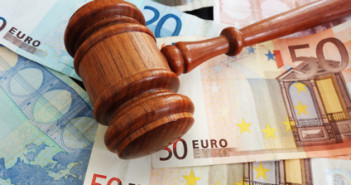In the past week, we have received quite a few fat hints from Draghi and his colleagues.Also the SNB’s shock move included 3 ECB QE hints. And if fat hints weren’t enough, Dutch ECB member Klaas Knot spills the beans on QE, or if you wish, ties the knot.
Here are the recent details emerging from the ECB, calculations for the potential size of the QE and implications for the euro:
The news
Knot gave an interview to Spiegel Magazine and provided some details reported here by Bloomberg. The most important detail is the guidance about the size: it could reach 20% to 25% of each countries outstanding government debt. The ECB is set to set a 20-25% purchase limit for each country’s debt.
Before we calculate what that means, here are additional important details: sovereign bonds will be bought by the national central banks: each NCB will buy its own bonds. This lowers the risk of fiscal transfer (forbidden by the EU treaty).
Another important detail is that the plan will not include Greek bonds due to their low rating. Greece may not be the only country not buying bonds. As Adam Button notes. this may allow the German Bundesbank to opt out of this big program, thus reducing the size of the program.
Another important news bit from Knot is that he said that Draghi presented the plan to German Chancellor Angela Merkel and to her finance minister Wolfgang Schäuble. This means that political preparation has been made at the highest levels.
Both the ECB and the German government declined to comment on this specific topic.
It is important to note that a decision hasn’t been announced yet and it could turn out differently than currently reported.
Yet according to what we know now, here are some numbers:
QE Calculations
According to Eurostat (you can see debt to GDP and also debt in millions of euros), the total government debt of the 18 country euro-zone for 2013 (before the addition of Lithuania in 2015) stood on just over 9 trillion euros: 9,007,691,600,000 euros if one wants to be precise. Greece had a debt of over 319 billion: 319,133,000,000 according to the data. That leaves: 8,688,558,600,000 or 8.68 trillion.
Assuming debt hasn’t squeezed since then and using simple math, 25% of 8.68 trillion is 2.17 trillion euros in the extreme scenario That is much larger than the 500-750 billion estimates.
Now let’s go for a more conservative calculations: let’s exclude Germany with 2,159,467,900,000 euros of debt, or 2.16 trillion. That leaves us with 6,529,090,700,000 or 6.529 trillion. And, let’s take 20% instead of 20%
So: 20% of 6.529 trillion is 1,305,818,140,000 or just over 1.3 trillion euros in a conservative calculation. Also here, the sum is huge: it includes the “trillion” word and is much higher than current estimations.
Bazooka Impact
It is important to note that for QE to have a material impact on the value of the euro (which it already has) and for QE to help the euro-area economies, there isn’t a need to deploy 1.3 or 2.17 trillion euros. The mere option of using such huge sums is strong enough.
With these kind of numbers, the ECB much more than compensates for the squeeze in its balance sheet due to the LTRO repayments. And contrary to the LTROs which have a limited time scope and need to be paid back, the QE-related expansion can be rolled over. The US and the UK maintain the wide balance sheets via reinvesting QE proceeds.
As aforementioned, the ECB hasn’t made an official announcement just yet: this awaits for Thursday, January 22nd. They could still make changes. And, prospects of ECB QE are on the cards for a long time and they have already hit the euro hard.
However, if a 20-25% debt purchase limit is set, the potential size could be huge and another big leg down from the euro cannot be ruled out.
More:
- What does the SNB know about ECB QE?
- SNBomb – Reactions from 35 forex brokers (and counting)
